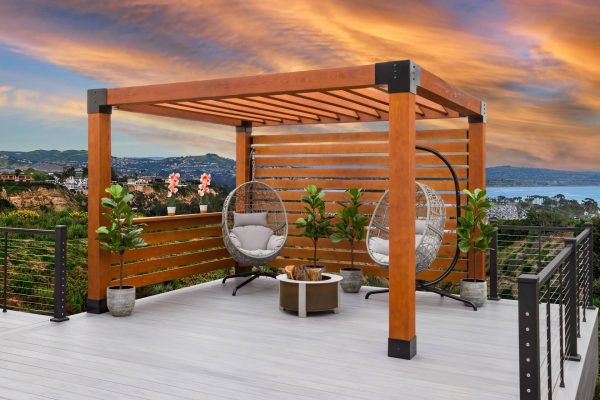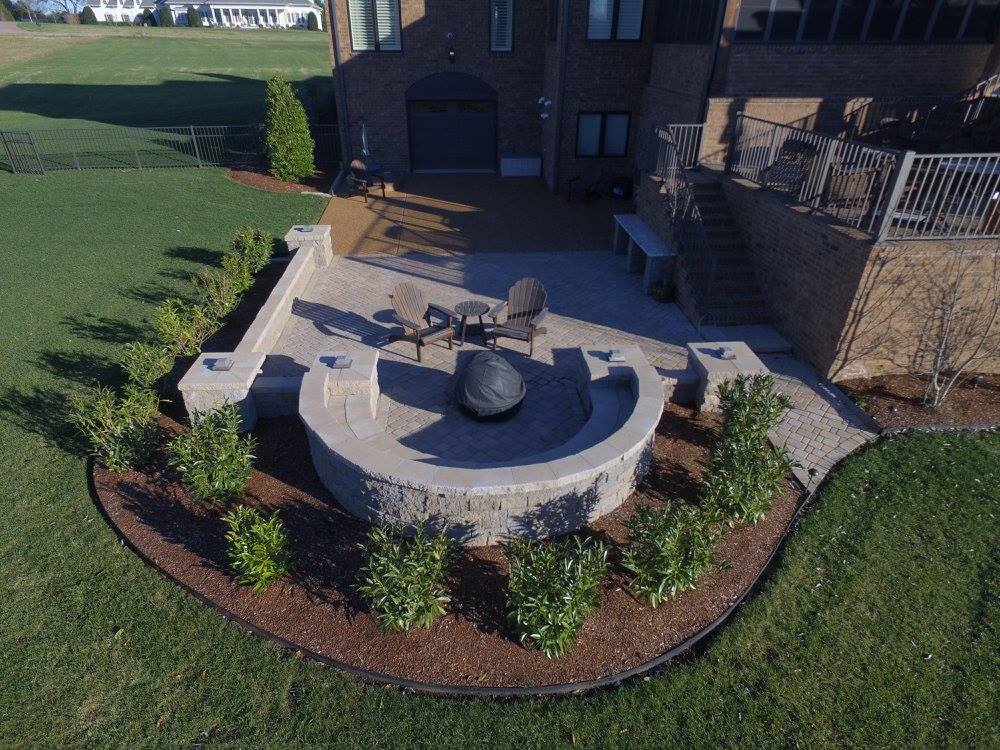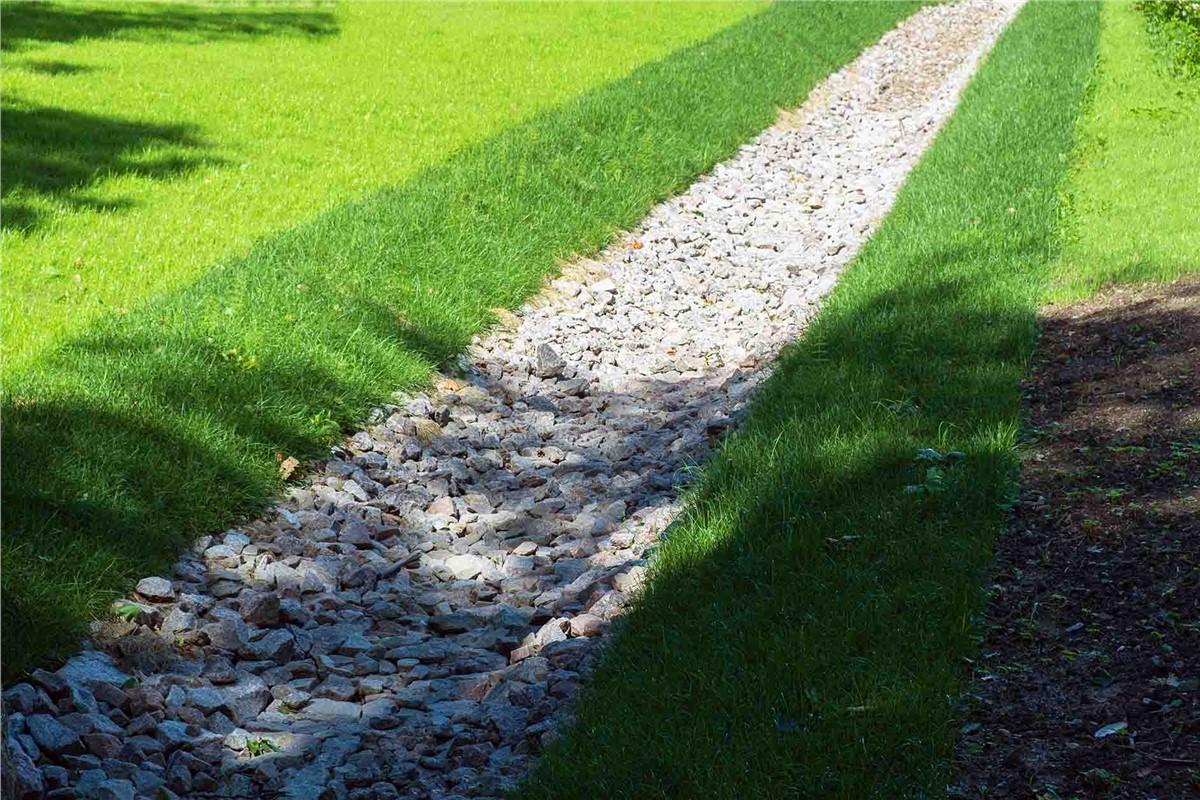Creating the perfect outdoor living space requires careful consideration of structure options that enhance both functionality and aesthetic appeal. Two of the most popular choices for homeowners looking to add architectural interest and defined outdoor areas are pergolas and gazebos. While both structures provide outdoor shelter and create inviting spaces for relaxation and entertainment, they offer distinctly different benefits, design possibilities, and practical applications.
Understanding the pergola vs gazebo decision involves evaluating factors like cost, maintenance, weather protection, design flexibility, and how each structure complements your specific outdoor living goals. Pergolas typically cost $2,000-8,000 and offer modern, open-air aesthetics with partial shade, while gazebos range from $3,000-12,000+ and provide complete weather protection with traditional, enclosed designs.
This comprehensive guide examines every aspect of the pergola vs gazebo comparison, helping you understand the unique characteristics, benefits, and considerations of each structure so you can make the best choice for your outdoor space, budget, and lifestyle needs with professional outdoor living design.
Understanding Pergolas: Open-Air Elegance
What is a Pergola?
A pergola is an open-air outdoor structure consisting of vertical posts supporting a framework of horizontal beams and cross-rafters. The distinctive open-lattice design creates partial shade while maintaining an airy, unenclosed feeling that seamlessly blends indoor and outdoor living spaces.
Key Pergola Characteristics:
- Open roof design: Horizontal beams with gaps allowing light and air flow
- Vertical support posts: Typically 4, 6, or 8 posts depending on size
- Partial shade coverage: Filters sunlight rather than blocking it completely
- Flexible design options: Can be freestanding or attached to homes
Common Pergola Applications:
- Patio covers: Defining outdoor dining and entertaining areas
- Garden walkways: Creating covered pathways through landscapes
- Pool areas: Providing poolside shade and architectural interest
- Outdoor kitchens: Sheltering cooking and preparation areas
Pergola Design Styles and Materials
Traditional Pergolas:
- Classic proportions: Balanced post spacing and beam relationships
- Natural materials: Cedar, redwood, or pressure-treated lumber
- Timeless appeal: Designs that complement various architectural styles
- Standard construction: Proven techniques and readily available materials
Modern Pergolas:
- Clean lines: Minimalist designs with sleek profiles
- Contemporary materials: Aluminum, steel, or composite materials
- Integrated features: Built-in lighting, fans, or retractable canopies
- Geometric designs: Angular or curved elements for visual interest
Material Options and Characteristics:
Wood Pergolas ($2,000-6,000):
- Cedar: Natural weather resistance, beautiful grain, moderate cost
- Redwood: Premium appearance, excellent durability, higher cost
- Pressure-treated lumber: Most affordable, requires regular maintenance
- Composite: Low maintenance, consistent appearance, premium pricing
Metal Pergolas ($3,000-8,000+):
- Aluminum: Lightweight, rust-resistant, powder-coated finishes
- Steel: Strong, durable, requires rust protection in some climates
- Vinyl: Low maintenance, limited design options, moderate cost
- Fiberglass: Weather-resistant, lightweight, specialty applications
Pergola Benefits and Advantages
Aesthetic and Design Benefits:
- Visual lightness: Open design doesn't overwhelm outdoor spaces
- Architectural definition: Creates structure without enclosing areas
- Design flexibility: Easily customized for specific spaces and styles
- Integration potential: Blends seamlessly with existing landscapes
Functional Advantages:
- Partial shade: Reduces sun exposure while maintaining openness
- Air circulation: Open design allows natural airflow
- Plant support: Ideal framework for climbing vines and plants
- Cost efficiency: Generally less expensive than enclosed structures
Maintenance and Longevity:
- Simple construction: Fewer components mean easier maintenance
- Weather exposure: Open design reduces wind load and weather stress
- Material flexibility: Easy to repair or replace individual components
- Upgrade potential: Can add features like retractable canopies later
Understanding Gazebos: Complete Outdoor Shelter
What is a Gazebo?
A gazebo is a freestanding, roofed outdoor structure that provides complete overhead protection while offering 360-degree views of the surrounding landscape. Traditional gazebos feature octagonal or circular designs, though modern versions include square and rectangular configurations.
Key Gazebo Characteristics:
- Complete roof coverage: Full protection from sun, rain, and weather
- Open sides: Unobstructed views and natural ventilation
- Elevated platform: Often built on raised foundations or decking
- Freestanding design: Independent structures not attached to homes
Common Gazebo Applications:
- Entertainment centers: Outdoor dining and social gathering spaces
- Garden focal points: Architectural anchors in landscape designs
- Pool cabanas: Poolside changing and relaxation areas
- Wedding venues: Romantic settings for ceremonies and photos
Gazebo Design Styles and Construction
Traditional Gazebos:
- Octagonal design: Classic eight-sided configuration
- Victorian details: Ornate trim work and decorative elements
- Natural materials: Wood construction with shingle or metal roofing
- Elevated platforms: Raised floors for drainage and prominence
Contemporary Gazebos:
- Geometric shapes: Square, rectangular, or hexagonal designs
- Modern materials: Steel, aluminum, or composite construction
- Integrated amenities: Built-in seating, lighting, or sound systems
- Minimalist aesthetics: Clean lines and simplified details
Gazebo Construction Materials:
Wood Gazebos ($3,000-10,000):
- Cedar construction: Weather-resistant, aromatic, premium appearance
- Pressure-treated lumber: Affordable option requiring regular maintenance
- Hardwood options: Teak, mahogany for luxury applications
- Composite materials: Low-maintenance alternatives with consistent appearance
Metal Gazebos ($2,000-8,000):
- Aluminum frames: Lightweight, rust-resistant, powder-coated finishes
- Steel construction: Heavy-duty options for permanent installations
- Wrought iron: Decorative options with traditional appeal
- Hybrid designs: Combining metal frames with fabric or wood accents
Specialty Gazebos ($5,000-15,000+):
- Screen enclosures: Bug protection with removable panels
- Glass panels: Weather protection with unobstructed views
- Retractable features: Convertible designs for seasonal use
- Custom construction: Architect-designed structures for unique applications
Gazebo Benefits and Advantages
Weather Protection Benefits:
- Complete coverage: Full protection from sun, rain, and weather
- All-season use: Usable in various weather conditions
- UV protection: Complete shade for sensitive individuals
- Equipment protection: Shelter for outdoor furniture and amenities
Entertainment and Functionality:
- Defined space: Clear boundaries for outdoor rooms
- Acoustic benefits: Roof structure can improve sound quality
- Privacy options: Can add curtains, screens, or panels
- Utility integration: Easier to add electrical, plumbing, or gas lines
Property Value and Appeal:
- Architectural focal point: Creates visual interest and landscape anchors
- Versatile functionality: Multiple uses throughout seasons
- Resale appeal: Attractive feature for potential home buyers
- Customization potential: Can be modified for specific needs
Pergola vs Gazebo: Direct Comparison
Cost Comparison
Initial Investment:
Pergolas: $2,000-8,000
- DIY kits: $500-2,500 for basic lumber or metal kits
- Professional installation: $3,000-6,000 for standard designs
- Custom pergolas: $5,000-8,000+ for premium materials and features
Gazebos: $3,000-12,000+
- Prefab gazebos: $1,500-5,000 for standard sizes and materials
- Professional installation: $4,000-8,000 for quality construction
- Custom gazebos: $8,000-15,000+ for architectural designs
Long-term Costs:
Pergola Maintenance: $200-500 annually
- Wood treatment: Staining or sealing every 2-3 years
- Component replacement: Occasional beam or post replacement
- Plant maintenance: Care for climbing vines if used
Gazebo Maintenance: $300-800 annually
- Roof maintenance: Shingle replacement, gutter cleaning
- Structural inspection: Regular checks for stability and wear
- Foundation care: Deck maintenance and support inspection
Weather Protection Comparison
Sun Protection:
Pergolas:
- Partial shade: 30-60% sun reduction depending on beam spacing
- Filtered light: Creates dappled shade patterns
- Plant enhancement: Can add climbing vines for more coverage
- Time-variable: Shade changes with sun angle throughout day
Gazebos:
- Complete shade: 100% overhead sun protection
- Consistent coverage: Uniform shade regardless of sun position
- UV protection: Complete protection from harmful rays
- Equipment protection: Shields furniture and electronics
Rain and Weather Protection:
Pergolas:
- Minimal rain protection: Open roof design offers no overhead coverage
- Quick drying: Allows air circulation to dry surfaces rapidly
- Plant integration: Climbing vines can provide additional coverage
- Seasonal adaptability: Can add retractable canopies for weather protection
Gazebos:
- Complete rain protection: Full roof coverage keeps area dry
- Weather shelter: Usable during rain, light snow, and wind
- All-season functionality: Consistent protection throughout the year
- Equipment protection: Complete shelter for furniture and amenities
Choose the perfect outdoor structure for your space with professional pergola and gazebo installation. We offer complete outdoor living design including patio installation, outdoor kitchens, and fire features. Serving Nashville, Brentwood, Franklin, and Nolensville. Contact our outdoor living specialists to explore pergola and gazebo options.
Design Flexibility and Aesthetics
Architectural Integration:
Pergolas:
- Seamless blending: Open design integrates naturally with landscapes
- Attachment options: Can connect to homes, decks, or other structures
- Scale flexibility: Easily sized for specific spaces and applications
- Style adaptability: Complements various architectural styles
Gazebos:
- Focal point creation: Distinctive structures that anchor landscape designs
- Freestanding requirement: Must be positioned as independent elements
- Size considerations: Requires adequate space for proper proportions
- Style specificity: Traditional designs may not suit all architectural styles
Customization Potential:
Pergolas:
- Easy modifications: Simple to add features or change configurations
- Plant integration: Natural framework for climbing plants and vines
- Lighting options: Easy to incorporate various lighting systems
- Seasonal additions: Can add temporary shade cloth or curtains
Gazebos:
- Built-in features: Can incorporate seating, bars, or entertainment systems
- Enclosure options: Ability to add screens, curtains, or glass panels
- Utility integration: Easier to add electrical, plumbing, or gas connections
- Climate control: Can add fans, heaters, or misting systems
Maintenance Requirements
Routine Maintenance:
Pergolas:
- Cleaning: Annual washing and debris removal
- Wood care: Regular staining or sealing for wood structures
- Hardware inspection: Checking bolts and connections
- Plant management: Pruning and training climbing plants
Gazebos:
- Roof maintenance: Gutter cleaning, shingle inspection
- Structural checks: Foundation and support inspection
- Floor care: Deck cleaning and maintenance
- Weatherproofing: Regular sealing and protection applications
Long-term Maintenance:
Pergolas:
- Component replacement: Individual beam or post replacement as needed
- Refinishing: Complete stripping and refinishing every 5-10 years
- Structural inspection: Professional evaluation every 5-7 years
- Upgrade installations: Adding features like lighting or shade cloth
Gazebos:
- Roof replacement: Shingle or roofing material replacement every 15-25 years
- Structural repairs: Foundation or framing repairs as needed
- Complete refinishing: Major refinishing every 10-15 years
- System maintenance: Electrical or plumbing system service
Expected Lifespan and Durability
Pergola Longevity:
- Wood pergolas: 15-25 years with proper maintenance
- Metal pergolas: 20-30+ years depending on material and climate
- Composite pergolas: 25-30+ years with minimal maintenance
- Factors affecting lifespan: Climate, material quality, maintenance frequency
Gazebo Longevity:
- Wood gazebos: 20-30 years with proper maintenance
- Metal gazebos: 25-40+ years with quality construction
- Roof systems: 15-25 years depending on material choice
- Factors affecting lifespan: Foundation quality, roof maintenance, climate exposure
Popular Design Trends and Ideas
Modern Pergola Trends
Contemporary Design Elements:
- Clean geometric lines: Minimalist designs with precise proportions
- Mixed materials: Combining wood, metal, and fabric elements
- Integrated technology: Built-in lighting, sound systems, and charging stations
- Retractable features: Motorized canopies and adjustable louvers
Functional Enhancements:
- Outdoor kitchens: Pergolas covering cooking and dining areas
- Fire features: Integration with fire pits or outdoor fireplaces
- Water elements: Combining with fountains or water features
- Garden integration: Designing around existing landscape elements
Contemporary Gazebo Trends
Modern Gazebo Features:
- Screen systems: Retractable or removable bug protection
- Climate control: Ceiling fans, misters, and heating elements
- Entertainment systems: Built-in audio, video, and lighting
- Multi-functional design: Convertible spaces for various activities
Luxury Amenities:
- Full outdoor kitchens: Complete cooking and bar facilities
- Spa integration: Hot tubs and relaxation areas
- Storage solutions: Built-in storage for cushions and equipment
- Smart home integration: Automated systems and remote control
Conclusion: Making the Right Choice for Your Outdoor Space
The pergola vs gazebo decision ultimately depends on your specific needs, budget, climate, and outdoor living goals. Pergolas excel in providing cost-effective, flexible outdoor structure with partial shade and seamless landscape integration, making them ideal for modern outdoor living spaces, plant integration, and budget-conscious projects.
Gazebos offer complete weather protection, defined outdoor rooms, and substantial architectural presence, making them perfect for entertainment-focused spaces, all-weather use, and properties requiring strong focal points.
Consider your priorities: if you value openness, flexibility, and cost efficiency, a pergola likely suits your needs. If you prioritize complete weather protection, defined spaces, and substantial outdoor architecture, a gazebo may be the better investment.
Both structures can significantly enhance your outdoor living experience and property value when properly designed, constructed, and maintained. The key is matching the structure to your specific outdoor living goals, site conditions, and long-term vision for your outdoor space.
Remember: the best outdoor structure is one that you'll actually use and enjoy for years to come. Consider how you envision using your outdoor space, what weather protection you need, and how the structure will complement your home and landscape before making your final decision.



